When we think of Niagara Falls, we generally think of the plunging volumes of water. However, not many people know that at one point in time Niagara Falls ran dry.
It was about 47 years ago that Niagara Falls went completely dry, leaving the cliff barren. Photos that captured the empty cliff have recently been released to the public. In June of 1969, United States engineers had diverted the flow of the Niagara River away from the American side for a few months. The engineers’ plan was to remove a majority of the loose rocks at the base of the waterfall. However, the idea was abandoned due to how expensive the task became; it was abandoned in November of that year.
During that time, the engineers had studied the riverbed and bolted and strengthened several areas to delay erosion in the waterfall. The United States Army Corp of Engineers blew up the damn in November 1969 and nearly six million cubic feet of water was released to fill the waterfall once again.
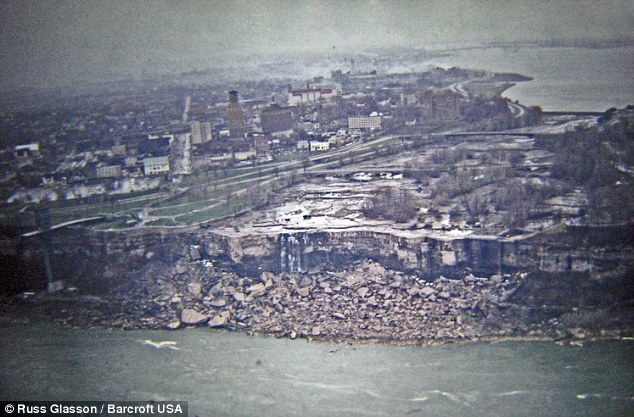
Nearly four decades later, the photos have been released after a man from Connecticut stumbled upon them. Russ Glasson had found the photos in an old shoebox he found at his in-laws’ home. Apparently, his in-laws had taken the pictures during visits to Niagara Falls. Glasson had explained that his in-laws took the photos over the six-month span, from June to November, when the Army was working on it.
Two rockslides, in 1931 and 1954, had caused a large amount of the rock to be collected at the base of the waterfall. In 1965, a local newspaper had stated that if the rocks were not removed from the base, the waterfall would eventually cease to flow altogether.
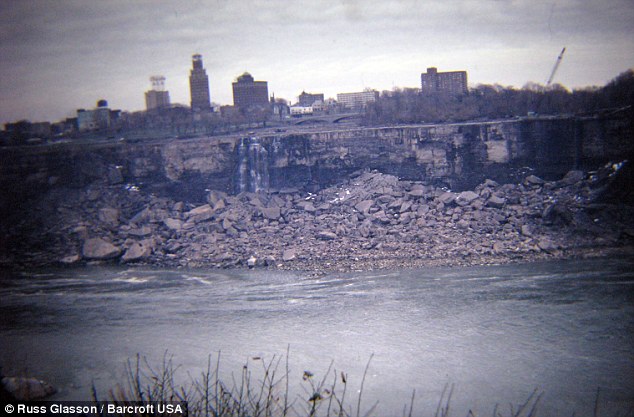
Four years after that newspaper statement, the United States Army Corp of Engineers were put in charge of drying up the falls in order to clean the river bed and remove the loose rocks. To make that happen, the Army had to build a 600-foot dam across the Niagara River. That meant that every second, 60,000 gallons of water had to be diverted to Horseshoe Falls, which flows on the Canadian side of the border.
The dam, consisting of 27,800 tons of rock, put a stop to the water flow. After flowing continuously for over 12,000 years, Niagara Falls was blocked. Over the next six months of the cleanup, Niagara Falls had thousands of visitors who wanted to view the process. To the visitors, this was a historic occasion.
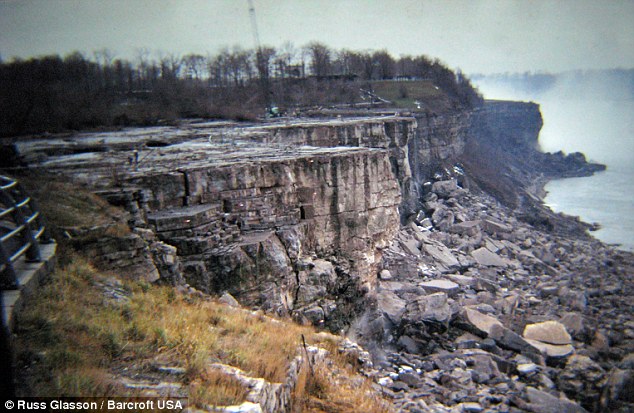
After the engineers had removed all of the collected rocks from the base, they did geological testing in order to deem the base safe. After proving the base was safe, the dam was blown and the cliff was “re-watered” on November 25 in front of over 2,000 people.
A little history about Niagara Falls:
Scientists believe that Niagara Falls formed at the end of the Ice Age. Large amounts of water were released once the ice started melting, resulting in it draining into what is now the Niagara River. Nearly 12,000 years ago, the water poured over the Niagara Escarpment, which is a cliff in Lewiston, New York. The force of the heavy water wore away the rock layers, resulting in Niagara Falls moving upstream to its present location.
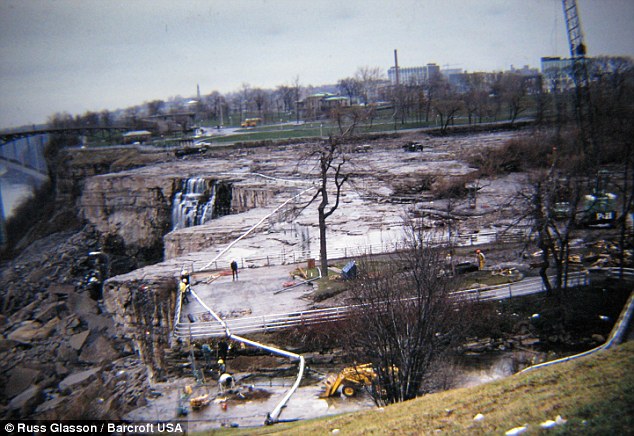
Even today, the water and the ice that is formed on the water wears away on the rocks, just like it did thousands of years ago. The gradual erosion and rockfalls tend to move Niagara Falls further upstream. Thanks to modern technology and the help of humans, the falls wear away less quickly. The volume of water has been reduced by its diversion for hydroelectric power.
Native Americans living near the Niagara region were most likely the first people to find it and know its true power. However, the first person to document the falls was a French priest known as Father Louis Hennepin. During his 1678 expedition, he was in awe over the size of the waterfall. After returning to France, he wrote a book about his discovery of the falls, resulting in all of western civilization finding out about this magnificent natural phenomenon.
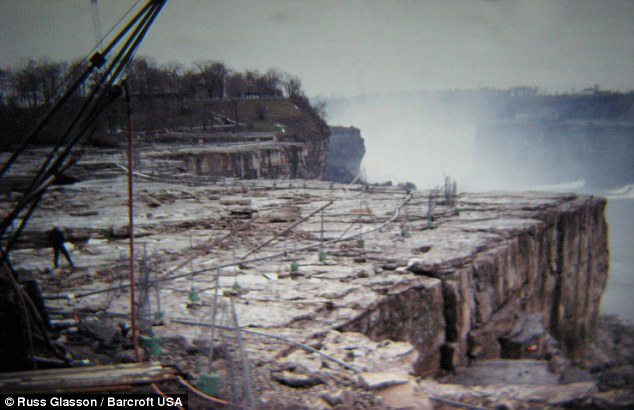
In the 1800s, a rail system was put in place in order for visitors to get there safely. It is said that in 1804, Napoleon Bonaparte’s younger brother honeymooned there with his bride. This is most likely the reason why Niagara Falls has become a popular spot for honeymooners.
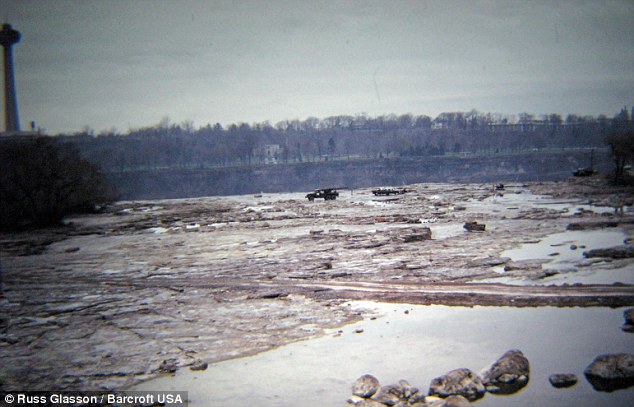
Follow the link to view the photos Glasson shared. It truly is amazing how the falls was stopped. The photos take on an eerie appearance. It would have been strange to witness in person the cliff when it was quiet and devoid of all water.
